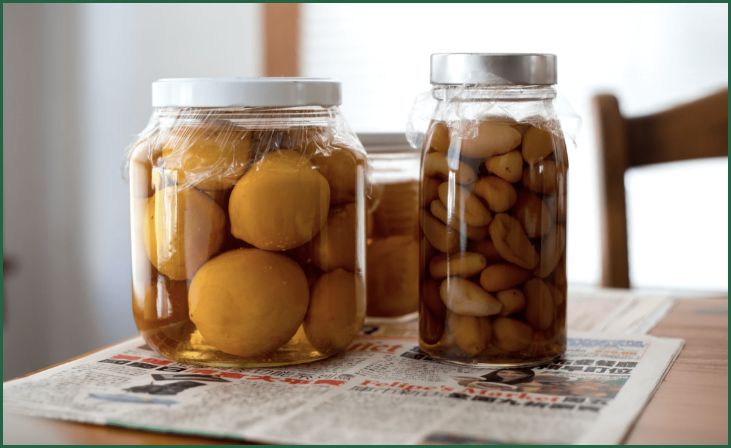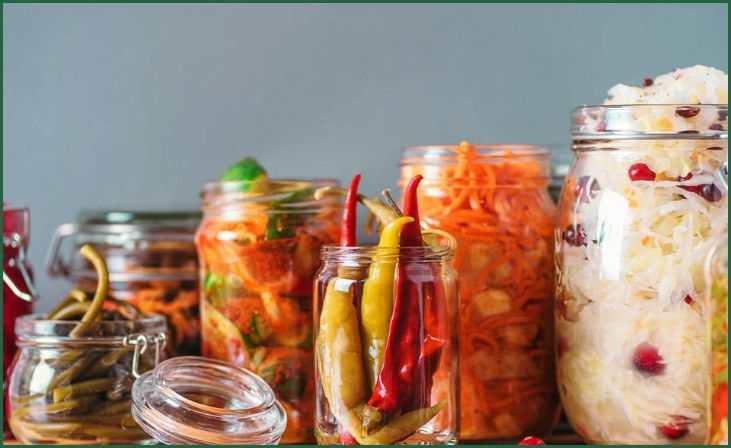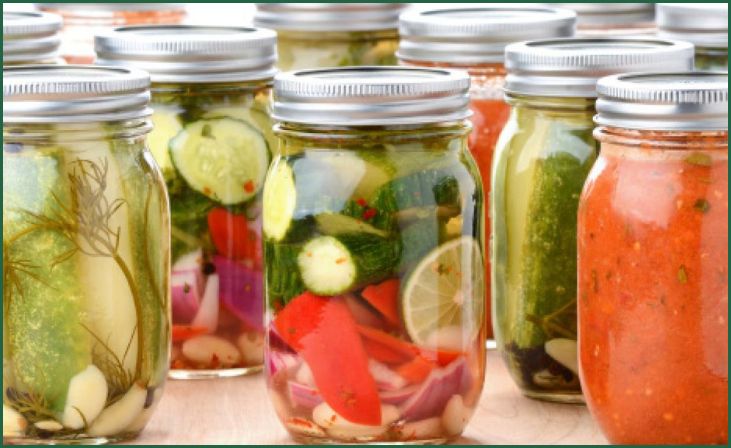Canning vs Fermenting – Welcome to our in-depth exploration of the age-old dilemma: Canning vs Fermenting. Whether you’re a seasoned home chef or a curious beginner, understanding the nuances of these preservation methods is crucial. In this blog, we’ll dissect the processes, compare their pros and cons, and help you decide which technique suits your culinary needs best.
Table of Contents
ToggleCanning vs Fermenting: 10 Must-Know Differences
In the world of food preservation, the battle between canning and fermenting is a timeless clash of techniques. Each method brings its unique set of characteristics to the table, influencing taste, texture, and nutritional value. Understanding these 10 must-know differences will empower you to make an informed choice, whether you’re looking to savor the freshness of canned goods or embrace the tangy allure of fermented delicacies.
1. Preservation Process

Canning involves sealing food in airtight containers, creating an oxygen-free environment that prevents the growth of spoilage-causing microorganisms. Heat is commonly applied to destroy existing bacteria and enzymes. In contrast, fermenting relies on the activity of naturally occurring microorganisms, such as bacteria and yeast, to break down sugars and produce lactic acid, preserving the food through acidity.
Also Read: How Long Can You Leave Your Fermented Foods?
2. Flavor Profiles
Canned goods tend to maintain the original flavors of the ingredients, with the heat during processing helping to retain their essence. Fermenting, on the other hand, introduces unique, tangy notes due to the production of lactic acid. The result is a complex flavor profile that can range from subtly sour to boldly tangy, depending on the fermentation duration and ingredients used.
3. Nutritional Value
While both methods preserve food, their impact on nutritional content differs. Canning can lead to some nutrient loss, particularly heat-sensitive vitamins like vitamin C. In contrast, fermentation often enhances nutritional value. The process can increase the bioavailability of certain nutrients, promote the growth of beneficial bacteria, and produce vitamins like B12.
4. Shelf Life
One of the critical considerations when choosing between canning and fermenting is shelf life. Canned goods, when stored properly, can last for an extended period, often up to several years. Fermented foods, while offering impressive shelf life, are best consumed within a certain timeframe to enjoy their peak flavor and texture. The duration varies depending on the specific item.
5. Skill Level and Equipment

Canning is generally perceived as more straightforward and beginner-friendly, requiring basic kitchen equipment like jars, lids, and a water bath or pressure canner. Fermenting, although not overly complex, demands a bit more attention and understanding of microbial activity. Basic tools like fermentation vessels, airlocks, and weights are essential for successful fermentations.
6. Microbial Involvement
Canning aims to eliminate microorganisms through heat, creating a sterile environment. In contrast, fermenting embraces the activity of beneficial microbes. Lactic acid bacteria, naturally present or introduced, play a pivotal role in fermenting, contributing not only to preservation but also to the unique flavors and potential health benefits of fermented foods.
Don't just scroll, subscribe!
BuzzTrail's unique web-stories are the cure for boredom you've been waiting for.
7. Probiotic Content
One of the standout features of fermented foods is their rich probiotic content. The fermentation process encourages the growth of beneficial bacteria, which can positively impact gut health. Canned foods, being heat-processed, lack live cultures. If enhancing gut health is a priority, opting for fermented foods may provide an added nutritional edge.
8. Texture and Appearance
Canned foods generally retain their original texture and appearance, albeit with potential softening during processing. Fermented foods, on the other hand, often undergo changes in texture. The breakdown of sugars by microorganisms can result in a softer or crunchier consistency, depending on the specific food item and the duration of fermentation.
9. Acidity Levels
Acidity is a crucial factor influencing the safety and taste of preserved foods. Canned goods are often characterized by a neutral pH, while fermented foods boast increased acidity due to the production of lactic acid. This heightened acidity not only acts as a natural preservative but also imparts a distinct tanginess to the final product.
Also Read: How to Safely Store Fermented Foods
10. Versatility in Recipe Options

Canning and fermenting offer a wide range of culinary possibilities, but their versatility in recipe options differs. Canning is ideal for preserving fruits, vegetables, sauces, and jams. Fermenting opens the door to a diverse array of creations, including sauerkraut, kimchi, pickles, and kombucha, allowing for the exploration of unique flavors and textures.
In the realm of food preservation, the choice between canning and fermenting ultimately depends on your preferences, culinary goals, and the specific characteristics you seek in preserved foods. Whether you lean towards the classic simplicity of canning or the adventurous world of fermentation, both methods offer a gateway to a pantry stocked with delicious, homemade delights.
Health Benefits of Canning and Fermenting
Health Benefits of Canning:
- Nutrient Retention: Canning, particularly using the water bath method, helps to preserve the nutritional value of fruits and vegetables. While some heat-sensitive vitamins may experience a slight reduction, the overall nutrient retention is impressive. Canned produce remains a good source of essential vitamins and minerals.
- Extended Shelf Life: The long shelf life of canned goods means that nutritious foods are readily available year-round. This can be particularly beneficial in ensuring a consistent intake of essential nutrients, especially during seasons when certain fruits or vegetables may not be in season.
- Convenience and Accessibility: Canned foods are convenient and easily accessible. This accessibility encourages individuals to include a variety of fruits, vegetables, and legumes in their diets, contributing to a more balanced and nutritionally diverse eating pattern.
- Food Safety: Canning is a process that involves heat treatment, which destroys harmful bacteria and microorganisms. This ensures the safety of the preserved food, reducing the risk of foodborne illnesses and providing a reliable source of nourishment.
Also Read: Foods You Didn’t Know Were Fermented
Health Benefits of Fermenting:
- Probiotic Powerhouse: One of the standout health benefits of fermentation is the introduction of probiotics into the diet. Fermented foods are rich in beneficial bacteria, such as lactobacilli, which support a healthy gut microbiome. A balanced gut microbiota is associated with improved digestion, immune function, and even mental well-being.
- Enhanced Nutrient Bioavailability: Fermentation can increase the bioavailability of certain nutrients. For example, the process can break down compounds like phytic acid, potentially improving the absorption of minerals like iron and zinc. This enhanced bioavailability contributes to better nutrient utilization in the body.
- Immune System Support: The gut plays a crucial role in the immune system, and fermented foods contribute to gut health. The probiotics in these foods may help modulate immune responses, leading to a more robust and effective defense against infections and diseases.
- Digestive Health: Fermented foods can promote digestive health by supporting the balance of beneficial bacteria in the intestines. This can be especially beneficial for individuals with digestive issues, as the introduction of probiotics may help alleviate symptoms like bloating and irregular bowel movements.
- Reduced Anti-nutrients: Fermentation can reduce the levels of anti-nutrients, compounds that can interfere with the absorption of nutrients. For example, fermenting grains can break down phytic acid, potentially mitigating its impact on mineral absorption and making the nutrients more available for the body.
- Potential Mental Health Benefits: More and more study is showing a link between gut health and mental health. The gut-brain axis is a complex communication network, and the presence of a healthy gut microbiome, influenced by fermented foods, may play a role in supporting mental health and cognitive function.
In summary, both canning and fermenting offer distinct health benefits. Canning preserves the nutritional content of foods with an extended shelf life, while fermenting introduces probiotics and enhances nutrient bioavailability, promoting gut health and potentially providing immune and mental health benefits. Incorporating a variety of both preserved foods into one’s diet can contribute to a well-rounded and health-supportive culinary experience.
Conclusion
In the canning vs fermenting showdown, there’s no one-size-fits-all answer. Your choice depends on factors like taste preference, desired shelf life, and the level of involvement you seek. Whether you opt for the time-tested canning or the ancient art of fermenting, both methods promise a pantry full of flavorsome delights. Happy preserving!
FAQs
What is the main difference between canning and fermenting?
What is the main difference between canning and fermenting?
Canning involves preserving food by sealing it in airtight containers, often with heat, to prevent spoilage. Fermenting, on the other hand, uses beneficial bacteria to break down sugars and create natural preservatives, resulting in a tangy, probiotic-rich product.
Which method is more beginner-friendly for home cooks?
Which method is more beginner-friendly for home cooks?
Canning is generally considered more straightforward for beginners. It requires basic equipment, precise recipes, and attention to detail. Fermenting, while not overly complex, involves a bit more intuition and monitoring due to the microbial activity.

